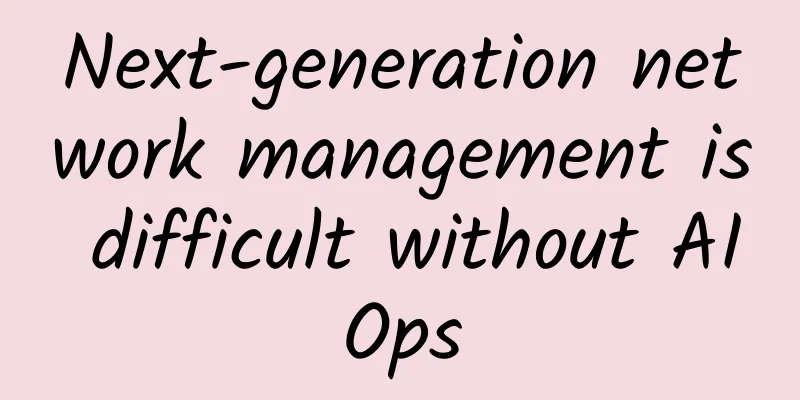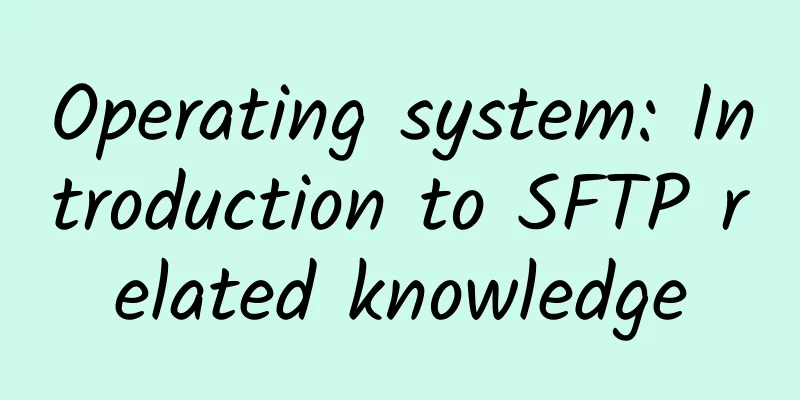Next-generation network management is difficult without AIOps

|
AI for operations, or AIOps platforms, is the intelligent way to deliver visibility, insights, and automation to next-generation networks. Monitoring and protecting networks is now more challenging than ever before due to the proliferation of distributed computing, remote users, and the numerous software abstraction layers present in large-scale next-generation network architectures. Network professionals can no longer effectively use manual tools to monitor performance, network security, and other areas of network management for modern networks. Instead, they should use predictive AIOps tools that comb through large amounts of network data, determine normal behavior, and address issues that may arise. Understanding and monitoring "normal" network behaviorNetwork operations (NetOps) professionals typically spend a long time trying to understand the network traffic for various applications and services flowing through an enterprise network, which can be months or even years. NetOps professionals use this knowledge along with network observability tools to identify when traffic deviates from the norm, indicating anomalies related to performance or network security that the enterprise needs to pay special attention to. In modern networks, this manual baselining approach presents obvious problems. On the one hand, enterprises are now more dependent on technology than ever before. Hybrid infrastructures are adding, removing, and distributing new systems at a faster pace, making it nearly impossible for NetOps teams to keep up. Second, when experienced NetOps professionals leave the enterprise, their knowledge leaves with them. New employees go through a learning curve to understand the correct and incorrect traffic flows. The time lag between losing a knowledgeable employee and waiting for new employees to develop skills can put the enterprise at significant risk. The benefit of machine learning and artificial intelligence in next-generation network management is that, unlike human employees, they never leave. AIOps platforms learn network traffic baseline behavior at a much faster rate. In addition, these platforms automatically detect additions or changes to the network architecture and rebuild the network traffic baseline in a fraction of the time it would take using manual processes. Analyze network status dataAnother problem with manual operations is the speed with which performance and security-related issues can be identified and fixed. Even if network professionals understand the traffic flows of critical business applications, traditional manual tools and processes are too slow. The growing reliance on technology and the increasing risk of data theft, loss, or disruption due to cybersecurity threats have put networks and the applications and systems they support in a constant state of flux. Network professionals can extract streaming network telemetry data from various parts of large modern network infrastructures. However, with so much data to analyze, humans now need artificial intelligence to make sense of it all. Identify problems and provide suggestionsAs the volume of network health data to analyze increases, the number of performance and security alerts also increases. Network teams must first categorize and prioritize these alerts, then troubleshoot to find the root cause and take remedial action. It often takes network administrators days or weeks to identify the root cause and manually troubleshoot a single performance or security alert; finding an actionable solution to the problem can also take a significant amount of time. This is where AIOps platforms shine. These tools alert, categorize, and prioritize network issues, as well as pinpoint where the problem is occurring and recommend ways to resolve it. The power of predictive analyticsAIOps platforms are evolving to help predict performance-related issues and suggest steps to resolve them before they escalate and hinder business operations. While there is a lot of hype about the level to which network teams should use predictive analytics tools, decision makers and network professionals working in large, complex environments should pay close attention to AIOps. |
<<: What is the value of 5G at the edge?
>>: Analysis on the Evolution of Home Wi-Fi Transmission Network Technology
Recommend
HostKvm adds Australian VPS, 40% off 2G memory package starting from $4.2/month
HostKvm has launched a new data center: Australia...
Soul's three major synchronization strategies for configuring cache for high-availability gateways
Preface The gateway is the entrance for traffic r...
Opportunity or chicken ribs? eMTC should not follow the NB-IoT price war
[[255921]] Recently, the official website of the ...
The Cybersecurity Law was promulgated: 6 highlights
On November 7, the 24th meeting of the Standing C...
Are there many pitfalls when porting your number? These users can't even do it
In the week since the black hole photo was releas...
Implementing a REST API server with caching in Go
1. REST API principles REST (Representational Sta...
Yunhai: A complete cloud server management system developed based on JAVA+NET
As we know, Standard Interconnect is a business t...
The impact of hybrid IT environments on NetOps professionals
Hybrid work models are driving a major shift in n...
How does Baidu Netdisk steal your traffic?
Recently, Baidu has once again been at the center...
DogYun New Year's Day promotion: 30% off on Elastic Cloud, 20% off on Classic Cloud, 100 yuan off per month for dedicated servers, 10 yuan free for every 100 yuan recharged
DogYun (狗云) has launched a promotional event duri...
How Fiber Optic Cable Helps Data Centers Save Money
In a data center, reliable fiber optic cables are...
Kubernetes uses OkHttp client for network load balancing
During an internal Java service audit, we discove...
When 5G meets new infrastructure, how will edge computing develop?
Edge computing has become one of the hottest tech...
After the confession failed, I understood the principle of TCP implementation
A few days ago, I posted a circle of friends and ...
There are five main WAN connection technologies!
1. DDN DDN is the abbreviation of Digital Data Ne...









